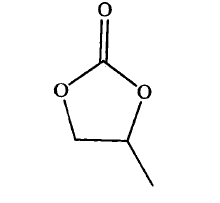碳酸丙烯酯合成工艺安全设计毕业论文
2020-04-25 20:19:51
摘 要
碳酸丙烯酯在工业生产中有着重要的用途,可用于烯烃芳烃萃取剂,高效的脱硫脱碳溶剂,二氧化碳吸收剂等。其商业价值较高,具有较好的发展前景。
碳酸丙烯酯及合成原料环氧丙烷都易燃,具有极大的危险性。然而在碳酸丙烯酯的生产工艺不断改进的同时,却鲜少有人关注到生产过程中的安全问题,
本文首先介绍碳酸丙烯酯的发展现状,明确其合成工艺安全设计的研究目的。通过比对光气法、酯交换法、氯丙醇法、环氧丙烷与二氧化碳环加成法等工艺,选择目前应用最为广泛的环氧丙烷与二氧化碳合成法,从物料、设备和工艺危险性出发,运用危险性和可操作性研究方法,将工艺流程划分为若干个节点,再对每个节点进行分析,通过关键词温度、压力、流量等分析其偏差原因,偏差后果。最后针对这些事故后果,提出相应的安全对策措施,为碳酸丙烯酯的安全生产提供保障,为该类型工艺安全研究提供依据。
关键词:碳酸丙烯酯、危险性与可操作性研究、安全措施
Abstract
Propylene carbonate has important applications in industrial production, and it can be used for olefin aromatic extractant, high-efficiency desulfurization and decarbonization solvent, carbon dioxide absorber and the like. Its commercial value is high and it has a good development prospect.
Both propylene carbonate and the synthetic raw material propylene oxide are flammable and extremely dangerous. However, while the production process of propylene carbonate has been continuously improved, few people have paid attention to the safety issues in the production process.
This paper first introduces the development status of propylene carbonate and clarifies the research purpose of its safety design. By comparing phosgene, transesterification, chloropropanol, propylene oxide and carbon dioxide cycloaddition processes, the most widely used propylene oxide and carbon dioxide synthesis methods are selected, from materials, equipment and process hazards. Starting from the risk and operability research method, the process flow is divided into several nodes, and then each node is analyzed, and the causes of deviation and the consequences of deviation are analyzed by keyword temperature, pressureand flow. Finally, in response to the consequences of these accidents, corresponding safety measures are proposed to provide guarantee for the safe production of propylene carbonate, which provides a basis for this type of process safety research.
Keywords: propylene carbonate ;HAZOP;Safety measures
目录
第一章 绪论 1
1.1引言 1
1.2碳酸丙烯酯生产现状 1
1.2.1 国内情况 1
1.2.2国外情况 2
1.3生产工艺介绍 2
1.4研究目的 2
第二章 碳酸丙烯酯生产工艺 4
2.1反应原理 4
2.2生产工艺 5
2.2.1光气法 5
2.2.2酯交换法 5
2.2.3氯丙醇法 6
2.2.4尿素醇解法 7
2.3合成工艺的选取 7
2.4详细工艺介绍 8
2.4.1工艺流程概述 8
2.4.2合成反应过程 9
2.4.3精馏过程 9
2.4.4催化剂回收过程 10
第三章 危险源辨识 11
3.1物料危险性 11
3.2工艺危险性 12
3.3设备危险性 12
3.3.1管线和阀门 12
3.3.2 仪表 13
3.3.3压力容器 13
第四章 危险性和可操作性研究(HAZOP分析) 14
4.1引导词 14
4.2 节点划分 15
4.3 HAZOP分析 15
4.3.1催化加成 15
4.3.2精馏过程 20
第五章 安全对策措施 24
5.1 爆炸的安全措施 24
5.2物料泄漏的安全措施 26
5.3人员中毒的安全措施 27
5.4产品异常的安全措施 27
第六章 总结 29
参考文献
第一章 绪论
1.1引言
碳酸丙烯酯,又可被称为1,2-丙二醇碳酸酯,英文名propylene carbonate,简称PC,分子式为C4H6O3, 结构式如图1.1所示。分子量102.9;熔点-49.2℃;沸点238.4℃;闪点为128℃。在常温下,碳酸丙烯酯外观无色呈液体状,无臭,易燃,与乙醚、苯、氯仿、等有机溶剂互溶,并且溶于水和四氯化碳,性质比较稳定。
碳酸丙烯酯在工业生产中有着重要的用途,在化工领域,由于其沸点和极性比较高,可用于油性和纺丝溶剂,烯烃或芳烃萃取剂。碳酸丙烯酯对于硫、碳以及二氧化碳的吸收能力很强,可用于它们的脱除剂。特别是在工业上生产氮肥时,常用它作为脱碳溶剂,这就使得碳酸丙烯酯的商业价值较高,具有较好的发展前景。不仅如此,碳酸丙烯酯作为优良的介质,在电化学上也有着极大的用处,在天然气,高分子材料、有机合成等各个领域都有着重要的作用。





